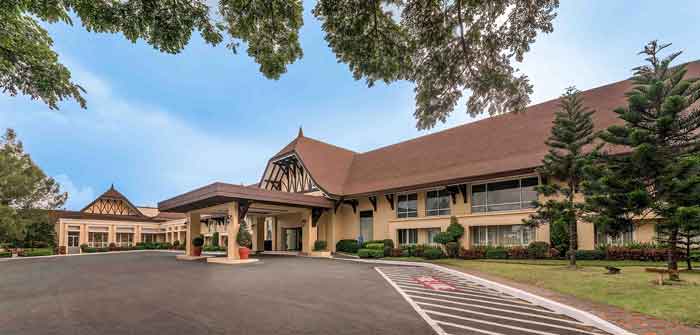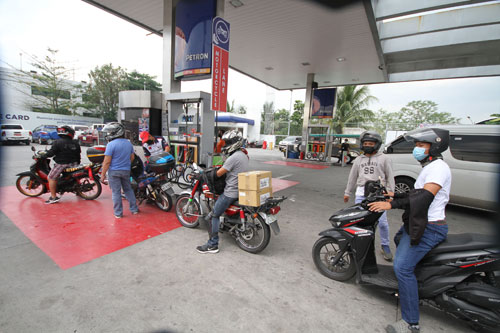Faster price increases in transportation, gas, alcoholic beverages and some food items pushed inflation to 5.4 percent in May, the fastest recorded output since December 2018’s 5.2 percent.
Last month, inflation was at 4.9 percent. In May of last year, when the country was still under the strictest quarantine level to fight off the COVID-19, inflation was at 4.1 percent.
The Philippine Statistics Authority said the acceleration last month was primarily due to the “higher annual growths in the food and non-alcoholic beverages index at 4.9 percent, and transport index at 14.6 percent.”
These commodity groups also contributed to the upward trend of the headline inflation in May: alcoholic beverages and tobacco, 6.8 percent; clothing and footwear, 2.1 percent; recreation, sport and culture, 1.7 percent; and personal care and miscellaneous goods and services, 2.5 percent.
Inflation rates went down for housing, water, electricity, gas and other fuels at 6.5 percent; and furnishing, household equipment and routine household maintenance at 2.5 percent.
Inflation for food at the national level increased further to 5.2 percent in May, from 4.0 percent last April.
“The uptick in the food inflation was primarily influenced by the double-digit annual growths in the vegetables, tubers, plantains, cooking bananas and pulses index at 15.2 percent, and oils and fats index at 13.6 percent,” said National Statistician Dennis Mapa.
Mapa added higher annual increments were recorded in flour, bread and other bakery products, pasta products and other cereals (4.8 percent); meat and other parts of slaughtered land animals (5.4 percent); fish and other seafood (6.2 percent); milk, other dairy products and eggs (1.5 percent); sugar, confectionery and desserts (8.7 percent); and ready-made food and other food products (3.5 percent).
Inflation in the National Capital Region (NCR) increased further to 4.7 percent from 4.4 percent the previous month, mainly due to the higher annual increase in the food and non-alcoholic beverages index.
Contributing largely to the uptrend of inflation in NCR was transport with an inflation rate of 13.8 percent in May, from 12.3 percent in April.
Inflation in areas outside NCR was higher at 5.5 percent from 5.1 percent last April, mainly due to the higher inflation for food and non-alcoholic beverages, followed by transport.
The highest inflation during the month remained in the Cordillera Administrative Region at 6.9 percent, while the lowest was still in Bangsamoro Autonomous Region in Muslim Mindanao at 2.4 percent.
Within forecast range
Benjamin Diokno, Bangko Sentral ng Pilipinas (BSP) governor, said the May figure is within the BSP’s forecast range of 5 to 5.8 percent and “consistent with the BSP’s assessment of continued uptick in inflation as supply-side pressures persist.”
“Inflation is projected to settle above the government’s target range of 2 and 4 percent for 2022 and average near the upper band of the target range for 2023,” Diokno said, noting that inflation is still “driven primarily by supply-side factors amid volatile global commodity prices.”
“Supply chain disruptions could also contribute to inflationary pressures, and thus warrant closer monitoring to enable timely intervention to arrest emergence of further second-round effects,” Diokno added.
“The latest assessment also indicates that domestic economic activity has gained stronger traction with the easing of mobility restrictions. However, heightened geopolitical tensions, a resurgence in COVID-19 infections in some countries along with faster-than-expected monetary policy normalization in advanced economies have clouded the outlook for global economic growth,” he also said.
He stressed that the balance of risks to the inflation outlook now “leans toward the upside for both 2022 and 2023. The upside pressures emanate from the potential impact of higher oil prices, including on transport fares, as well as the continued shortage in domestic pork and fish supply.”
The downside risks are linked mainly to the potential impact of a weaker-than-expected global economic recovery.
“The BSP will continue to review emerging price developments and the outlook for inflation and growth in the country ahead of the upcoming monetary policy meeting (on June 23).
The pace and timing of any further monetary policy actions by the BSP shall be guided by data outcomes, in keeping with the BSP’s price and financial stability objectives,” Diokno said.
Temporary measures
The National Economic and Development Authority, meanwhile, highlighted the issuance of Executive Order (EO) No. 171 and the government’s fuel subsidy program in helping ease the impact of global inflationary pressures.
“The Russia-Ukraine conflict has disrupted the global supply chain and elevated commodity prices, particularly for fuel. We have seen how a single crisis can set us back, so the Duterte administration has pursued both short- and long-term interventions to increase the resilience of our domestic economy against external shocks,” said Socioeconomic Planning Secretary Karl Kendrick Chua.
To help cushion the impact of higher fuel prices on the most vulnerable, Chua said the government has increased the total budget for targeted subsidies to P6.1 billion.
As of June 1, over 180,000 public utility vehicle drivers and operators have received their P6,500 fuel subsidy under the Pantawid Pasada program. Also, more than 158,000 farmers and fisherfolk are set to receive P3,000 as fuel discounts.
“To facilitate the entry of more goods at lower prices, President Duterte issued EO No. 171 to modify tariff rates for pork, corn, rice, and coal. This is among the key recommendations of the Economic Development Cluster in addressing the inflationary impact of the Russia-Ukraine conflict,” Chua said.
“These temporary measures are expected to increase our food supply and ease higher electricity costs in the short-term,” Chua said.
Dependent on oil
Analysts at the Bank of the Philippine Islands (BPI) said inflation may go up further in the coming months depending on the behavior of oil.
“Assuming the average price of oil will stay at $100 until the end of the year, there is a possibility that inflation will peak in early fourth quarter near 6 percent. However, there are still a lot of uncertainties surrounding the outlook for oil. The European Union is planning to impose an oil embargo against Russia as a response to its attack in Ukraine. Countries will be competing for other sources of oil in this scenario and prices will most likely soar,” BPI said in a statement.
BPI also said the peso is expected to weaken further in the coming months considering the surge in import demand, as energy companies will likely incorporate the depreciation of the peso into the retail cost of oil and electricity.
Analysts also see a spillover effect on food given the increasing reliance of the country on imported food products like meat and rice.
“Considering the risks, we expect a 100 basis points hike from the BSP from now until the end of the year, which will bring the policy rate to 3.25 percent. We believe the economy has enough cushion in case the BSP decides to hike its policy rate further. Historical experience has shown that the economy can grow by at least 6 percent in an environment where the policy rate is around 3 percent,” BPI said, adding that a more significant risk to growth is inflation and the depreciation of the peso.
“Hiking the policy rate (RRP) will serve as a stabilizing tool that could temper the depreciation of the Peso. Also, this will likely prevent a substantial decline in Dollar reserves that could lead to more volatility in the local markets,” BPI said.
Recovery to slow down
Michael Ricafort, chief economist at Rizal Commercial Banking Corp., said higher inflation would slow down the economic recovery, amid the reduction in the purchasing power or disposable income given more spending for oil, energy and other global commodities and to pay for higher prices of affected goods and services.
“Further reopening of the economy towards greater normalcy…could help economic recovery prospects and some pickup in demand and potentially in prices/inflation, going forward, though could be offset by the relatively slower pace of economic recovery,” Ricafort said.
Supply-side inflation factors, he said, would be better addressed by non-monetary measures to increase the supply and lower tariffs and prices of local food, pork, fish, rice and other agricultural products.
“As a result, risk of any second-round inflation effects, which could be triggered by higher wages and possible increase in transport fares, would still be monitored before any further hikes in local policy rates,” Ricafort said.
He added the latest inflation rate is still way higher than the key local policy rate at 2.25 percent “and this would still support any further potential hike in local policy rates amid negative net interest rates as partly sustained by excess liquidity in the financial system.”
“For the coming weeks, the continuation of relatively accommodative monetary policy, especially though relatively modest hikes in local policy rates remains possible; but any further cut in large banks’ RRR (from the current 12 percent) would likely be deferred until inflation stabilizes further; as the economy needs all the support measures that it could get at this time largely due to the adverse economic effects of the COVID-19 lockdowns 2020-2021, amid the lack of additional funding for more fiscal stimulus measures, thereby making continued relatively accommodative monetary policy measures possible to help improve prospects of economic recovery,” Ricafort said.







